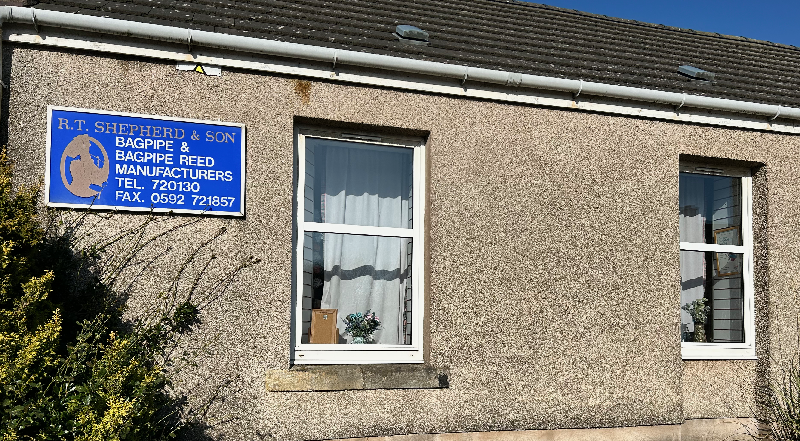
The liquidation of the once world-beating bagpipe and reed manufacturers RT Shepherd & Sons has been announced.
It will be a sad day for all friends and followers of the founder, P/M Bob Shepherd, who started the company in the 1970s following his Worlds-winning spell with Dysart & Dundonald Pipe Band. Bob died in 2019.
The company’s chanters and reeds were played worldwide and it was responsible for some outstanding innovations in the sound and construction of the bagpipe.
RT Shepherd was first with the Canmore bag, plastic drone reeds, Bb chanters and many other developments in the instrument.
Cigar-smoking Bob welcomed everyone to his Fife premises. An an RSPBA judge, he was always ready with advice for pipe majors, especially those in Grade 1.
The liquidation is compulsory. This means it has been forced on the company by the courts, usually due to the company’s inability to pay its debts.
The official notice reads: Notice of Appointment of Liquidators: RT Shepherd & Sons (Scotland) Limited; Company Number SC165038
Registered office and Principal Trading address: 164 Jamphlars Road, Cardenden, Fife, KY5 0ND. The nature of the business of the company is manufacture of musical instruments
Type of appointment: Compulsory Liquidation; Name of office holder: Steven Wright, 2nd Floor, 18 Bothwell Street, Glasgow, G2 6NU; Capacity of office holder: Provisional Liquidator; Date of appointment: 21 March 2025
Office holder’s telephone number and email address: 0141 535 3133 and glasgow@dains.com; Alternative contact for enquiries on proceedings: Gillian Campbell, tel: 011 535 3133; gcampbell@wd-br.co.uk
The Process:
- A licensed insolvency practitioner is appointed to oversee the liquidation process.
- The liquidator sells the company’s assets to generate funds.
- Funds from these sales are used to pay off the company’s debts and liabilities.
- Creditors are paid according to their priority, with secured creditors being paid first.
- Once all debts are paid the company is dissolved and it ceases to exist as a legal entity.
Liquidation is often associated with insolvency, where a company cannot meet its financial obligations. Creditors are the primary stakeholders in the liquidation process, and their claims are prioritised.
Shareholders may receive a return if there are assets remaining after all debts are paid. In some cases, directors or shareholders may face personal liability for company debts, especially if they have made personal guarantees.
Liquidation is a formal legal process, and correct procedures must be followed. The company name remains live on Companies House but its status switches to ‘Liquidation’. The removal of the name only comes about on dissolution, approximately three months after the closure of the liquidation.